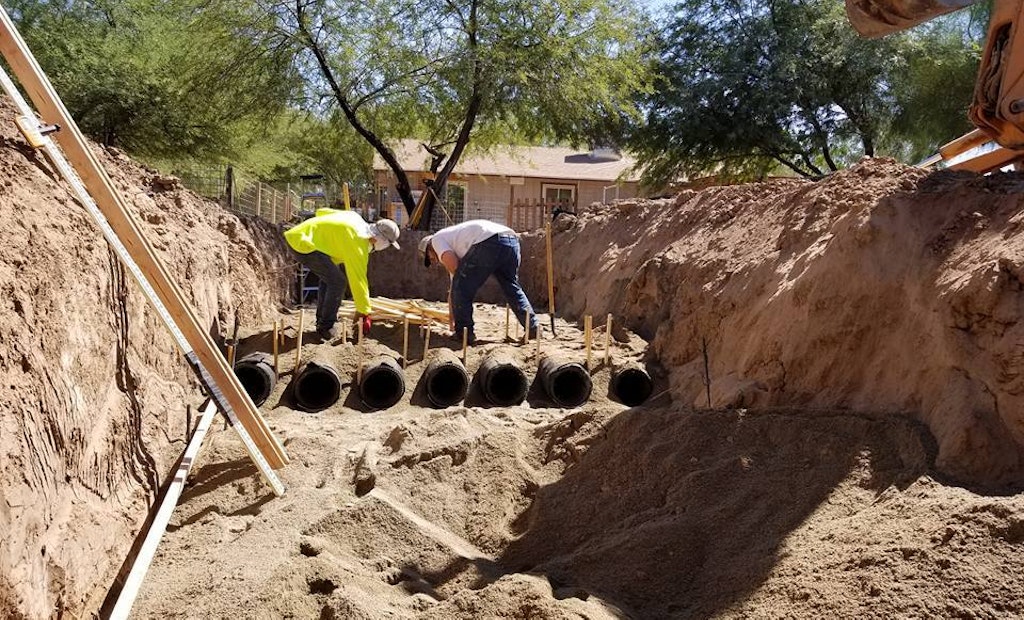Interested in Systems/ATUs?
Get Systems/ATUs articles, news and videos right in your inbox! Sign up now.
Systems/ATUs + Get AlertsJereme Tuggle’s Legacy Excavating & Underground installs about 40 residential onsite systems per year in Yuma County in southwest Arizona.
About half of them are in the Colorado River Valley, where the soils are rich in clay and the groundwater tends to be high. These sites call for alternatives to rock-and-pipe systems, and Tuggle chooses Enviro-Septic pipes from Presby Environmental.
He likes them for the ease of installation and because the system can be rejuvenated as it ages. The pipes are installed on the outlet side of the septic tank. Nothing needs to be installed in the tank, and passive treatment means there is no aerator, no pump, and no electrical connection to be made.
The perforated recycled plastic pipes have ridges that increase the surface area, improve cooling and provide space for growth of beneficial bacteria that break down waste. The pipes are wrapped in green fiber mat that helps filter out suspended solids and creates a massive bacterial treatment area. This mat also helps protect an outer wrapping of black geotextile fabric and provides a protected bacterial treatment surface. Skimmer tabs at each perforation in the piping keep grease and suspended solids from leaving the pipe.
The result is a treatment system that removes up to 98 percent of wastewater contaminants, recycling clean water into the environment and recharging natural water supplies. Each linear foot of piping contains 40 square feet of bacterial growth area.
Each unit of Enviro-Septic pipe is 10 feet long with an outside diameter of 12 inches and is marked with the product’s name. Snap-lock couplings, offset adapters, PVC piping and end caps are used for assembly. System Sand is needed to complete the system. This type of sand is readily available and is created to a defined specification using sieve analysis.
System Sand is a coarse-textured sand that leaves larger pore spaces to facilitate airflow in and around the Enviro-Septic pipes. It functions as the “lungs” of the system, providing the oxygen needed to support the aerobic, bacterial processes that purify wastewater. It also provides venting to remove the gases produced as a byproduct of bacterial waste digestion.
The technology can reduce the size of the drainfield footprint and follow uneven terrain.
In terms of installation, Tuggle observes, “We’ve got it down to an art. I can install a Presby almost as fast as a regular system. I really like the fact that they can be rejuvenated.
“With a gravel and pipe system I can tell the customer, ‘If this fails, call me and I’ll come in and charge you again to redo your leach lines.’ But I can put in the Presby and say, ‘Within 20 years, if this fails, it can be rejuvenated.’ You’re supposed to be able to pump the system, pull the caps off the ends of the pipes and let them dry out. Then you put the caps back on and start using the system again.”






